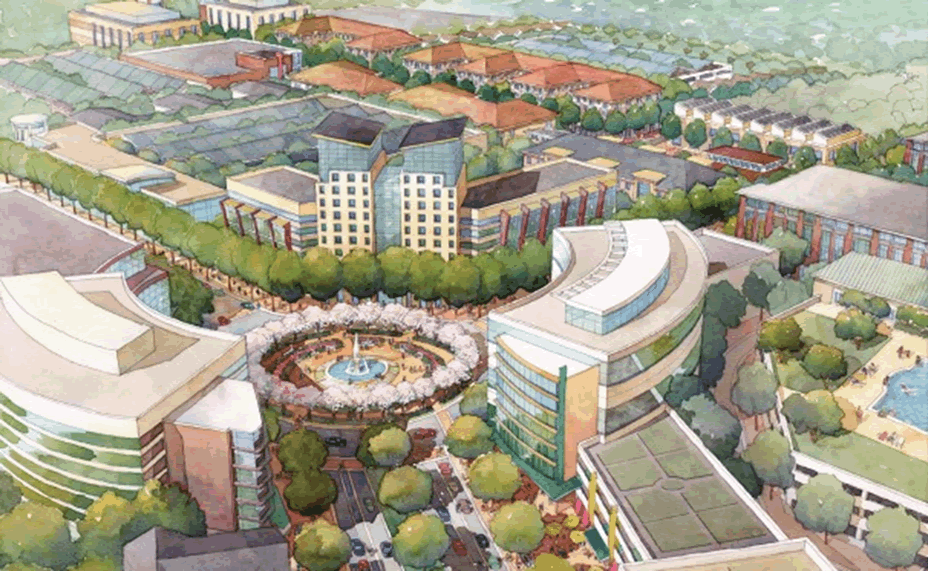Also on Thursday, Jan. 26: Moving ahead on
White Oak Science Gateway Redevelopment
ROCKVILLE, Md., January 25, 2017—The Montgomery County Council’s Health and Human Services (HHS) Committee and its Education Committee will meet jointly at 1:45 p.m. on Thursday, Jan. 26, to receive a briefing on New York City’s efforts to implement its “Pre-K for All” program. Councilmembers have long expressed interest in expanding quality early childhood education and care services, including Pre-kindergarten (Pre-K) opportunities to ensure that children enter kindergarten ready to learn.
The HHS Committee, which is chaired by Councilmember George Leventhal and includes Councilmembers Roger Berliner and Craig Rice, and the Education committee, which is chaired by Councilmember Rice and includes Councilmembers Marc Elrich and Nancy Navarro, will meet in the Third Floor Hearing Room of the Council Office Building at 100 Maryland Ave. in Rockville. The meeting will be will be televised live by County Cable Montgomery (CCM), which can be viewed on Cable Channels 996 (high definition) and 6 (standard definition) on Comcast; Channels 1056 (HD) and 6 (SD) on RCN; and Channel 30 on Verizon. The sessions also will be available live via streaming through the Council web site at http://tinyurl.com/z9982v8 .
The joint committee requested the briefing to gain insight on how New York City funded and implemented its full-day, universal pre-K program over a two-year expansion period.
New York City representatives expected to talk with the Council by conference call include:
- Richard Buery, deputy mayor for Strategic Policy Initiatives
- Josh Wallack, deputy chancellor of Strategy and Policy in its Department of Education
- Charissa Townsend, policy advisor in the Office of the Deputy Mayor for Strategic Policy Initiatives
- Jeyla Mammadova, special projects coordinator for Pre-K for All
County representatives expected to participate in the briefing include:
- JoAnn Barnes, chief of Children, Youth, and Families in the Department of Health and Human Services (DHHS)
- Monica Ortiz-Neustrup, DHHS early care and education policy officer
- Deann Collins, director of the Division of Title I and Early Childhood Programs for Montgomery County Public Schools
“High-quality universal pre-kindergarten programs are key to leveling the playing field for all of our children and helping to close the opportunity gap,” said Councilmember Navarro, who has served as a member of President Obama’s Advisory Commission on Education Excellence for Hispanics. “We have seen results working with our community Pre-kindergarten providers and Montgomery County Public Schools, but I believe it’s time for us to follow the New York City model where every child has access to high-quality early learning programs. I am excited to learn from the experience of New York City leaders, and I am committed to expanding Pre-kindergarten programs in Montgomery County.”
The background and highlights of the New York City program include:
- In his campaign for New York City mayor in 2012, Bill de Blasio pledged the creation of universal full-day Pre-K funded by an income tax surcharge. After Mayor de Blasio’s election, the state legislature agreed to provide $300 million each year for five years to fund universal Pre-K in New York City in 2014.
- New York City offers free, high quality, full-day Pre-K to all 4-year-olds in its five boroughs. As of the first day of the 2016-17 school year, more than 70,400 children were registered in Pre-K for All—an increase from 19,287 prior to the expansion of Pre-K for All.
- The two-year expansion effort began in the 2014-15 school year and focused not only on ensuring access but also on investing in Pre-K quality. The New York model implements research-based instruction and family engagement practices and provides differentiated support at the classroom and program levels using program quality data and standards.
The New York model uses a mixed delivery system for Pre-K services that are provided through district schools, New York City Department of Education Pre-K Centers and community-based providers (New York City Early Education Centers). Almost 60 percent of Pre-K students are enrolled in early education centers.
At 9:30 a.m. in the Seventh Floor Hearing Room, the Government Operations and Fiscal Policy Committee, which is chaired by Councilmember Navarro and includes Councilmembers Sidney Katz and Hans Riemer, and the Planning, Housing and Economic Development Committee, which is chaired by Councilmember Nancy Floreen and includes Councilmembers Riemer and George Leventhal, will address issues related to the White Oak Science Gateway Redevelopment Project.One issue that will be discussed is County Executive Ike Leggett’s recommendation of an amendment to the Capital Improvements Program (CIP) and supplemental appropriation to the Fiscal Year 2017 Capital Budget in the amount of $47.2 million.
The funds would go toward the demolition of on-site buildings for the Site II Property on Industrial Parkway in Silver Spring and construction of master-planned roads.The joint committee also will receive an update on White Oak redevelopment from Peter Fosselman, the White Oak Science Gateway implementation coordinator.
# # # #

